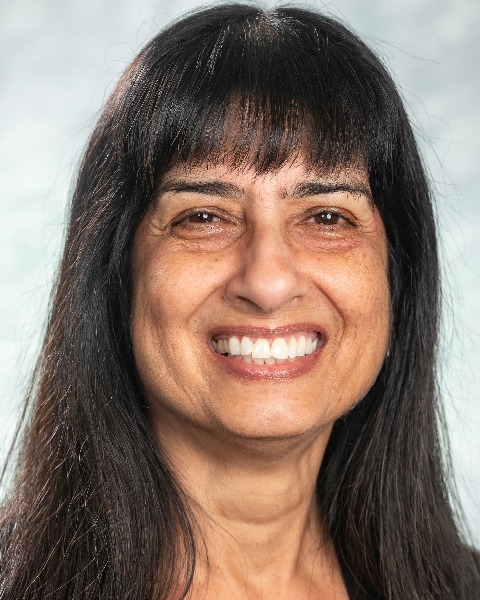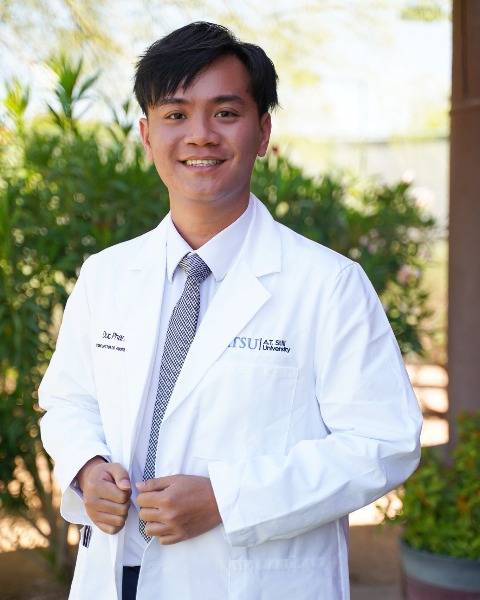Pediatrics (P)
PP1102 - Educating Individuals with Wolfram Syndrome: A Neurodegenerative Dual Sensory Loss

Zarin Mehta, PhD
Associate Professor
A. T. Still University
A. T. Still University
Mesa, ArizonaDisclosure(s): No financial or nonfinancial relationships to disclose.

Duc Phan (he/him/his)
Student Doctor of Audiology
A.T. Still University
A.T. Still University - Arizona School of Health SciencesDisclosure(s): No financial or nonfinancial relationships to disclose.
Lead Presenter(s)
Presenter(s)
Wolfram Syndrome (WS) is a congenital autosomal recessive neurodegenerative disorder that results in a dual sensory loss. Characteristic features of WS include, DI-Diabetes Insipidus, DM-Diabetes Mellitus, OA-Optic Atrophy, and D-Deafness (DIDMOAD). This poster will present the case of Phineas, a 21-year-old male high school student diagnosed with WS in elementary school. Phineas uses hearing aids/hearing assistive technology as well as a human visual guide in the classroom/school. This poster will discuss the educational needs and challenges for individuals with WS including the need for a multidisciplinary approach. Resources that address students’ overall wellness and family support will be presented.
Summary:
A syndrome is a group of signs and symptoms that occur together and characterize a particular abnormality/condition. Currently, there are 400+ syndromes that involve hearing impairment. Dual sensory loss (DSL) is combined vision and hearing loss, often referred to as deafblindness. A person who is deafblind is typically not completely deaf or blind, but both senses are reduced enough to cause significant difficulties in everyday life. Dual sensory loss is categorized as congenital and acquired. Congenital DSL can be caused by premature birth, genetic conditions such as Down’s syndrome, WS, and Usher’s disease, prenatal infections (e.g., rubella and cytomegalovirus), drug and/or alcohol abuse during pregnancy (Swann, 2010). Acquired DSL can occur as a natural aging process, injuries, or brain and nerve damage such as neurodegenerative conditions (Swann, 2010).
Wolfram syndrome (WS) is a rare congenital neurodegenerative disorder with a prevalence of 1 in 160,000-770,000 (Urano, 2016), first reported by Dr(s) Wolfram and Wagener in 1938. It is a syndromic, genetic, dual sensory loss with autosomal recessive mode of transmission. The WFS1 gene provides instructions for producing a protein called wolframin that regulates the amount of calcium in cells, an abnormality of which results in the symptom constellation of WS. It is also known as DIDMOAD, the scientific acronym illustrating its hallmark features; DI-Diabetes Insipidus, DM-Diabetes Mellitus, OA-Optic Atrophy, and D-Deafness. Neurological signs associated with WS include ataxia, epilepsy, psychiatric disorders, and cognitive impairment. Kidney abnormalities are also reported. Wolfram syndrome generally has a poor prognosis with premature death at ~ 25-49 years, typically from respiratory failure due to brainstem atrophy (Urano, 2016).
Phineas, a 21-year-old male high school student, was diagnosed with WS around 3rd grade. Diabetes mellitus, diabetes insipidus, vision loss, and bilateral moderately-severe to profound sensorineural hearing loss were reported. He used binaural hearing aids and hearing assistive technology in the classroom. Phineas reportedly experienced a choking accident that deprived his brain of oxygen for a prolonged time resulting in complete loss of peripheral vision and weakening of central vision.
Although Phineas regularly attends school, he is unable to enroll in a traditional classroom setting. In addition to academic resources, he also attends an ability lab for learning life skills. Phineas depends on a human guide to navigate around campus. He experiences extreme listening fatigue due to increased listening effort and becomes easily frustrated. Managing Phineas’ education in a school setting requires a multidisciplinary approach, inclusive of an educational audiologist, teacher of the visually impaired, teacher of the Deaf/hard-of-hearing, orientation & mobility specialist, nurse, physical therapist, speech-language-pathologist, psychologist, special/general education teachers, and parent(s)/caregiver(s).
This poster will inform professionals about WS and the educational needs of children with this condition. Specifics about the hearing loss and role of the different professionals working with Phineas, including the interaction between clinical and school professionals will be discussed. Resources for not just the educational needs, but also psychological health, development of independence, transition into adulthood, and support for family members of children with dual sensory loss will be presented.
Learning Objectives:
- Upon completion of this session, participants will be able to assess educational challenges, opportunities, and management of students with dual sensory loss, particularly Wolfram syndrome, in the schools.
